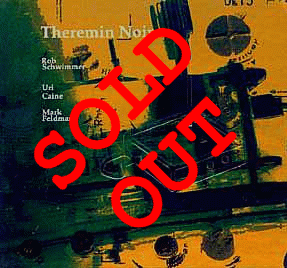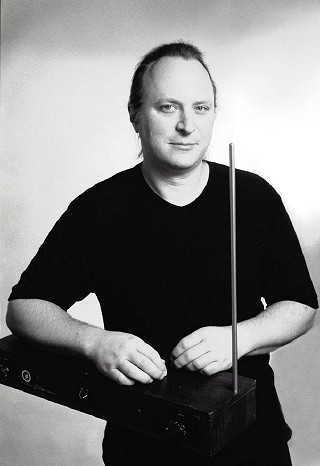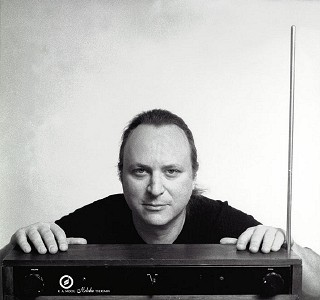Rob Schwimmer/Uri Caine/Mark Feldman --: Theremin Noir (November Music)
Musically, keyboardist-multi-instrumentalist Rob Schwimmer has always
had a mischievous sense of humor (as with the dead-on musical parodies
he and Mark Stewart stage under the aegis of Polygraph Lounge), but he
doesn't play things for laughs on Theremin Noir. No, this is darkly
evocative modern chamber music, with a healthy dollop of improvisation,
and exceptional sonics to boot. Teaming with such borderless musicians
as pianist Uri Caine and violinist Mark Feldman (both of whom have
extensive experience in a variety of classical and jazz contexts),
Schwimmer employs the
Moog
Etherwave Theremin, accordion,
waterphone, daxophone and a variety of musical toys to add colorations
to their round robin exchanges and tight arrangements --but mostly to
stand front and center as the trio's poignant vocal presence. And yes,
I do mean vocal, because while Schwimmer only occasionally exploits the
theremin for its ability to produce goofy sci-fi suggestions of things
which go bump in the night ("Parade on Mars"), he recognizes the lyric
qualities this under-appreciated antecedent to the modern synthesizer
can bring to acoustic settings... which is what makes Theremin Noir so
unique in the recorded annals of the theremin.
So if you're on the prowl for sound effects (which is what most people
generally associate with the theremin --when they think of it as all)
go dig out your Raymond Scott CDs, because Schwimmer's repertoire is
rife with post-modern instrumental settings, including several
fascinating interpretations of thematic highlights culled from the
oeuvre of film composer Bernard Hermann, who
created an astonishing musical-psychological subtext for director
Alfred Hitchcock's greatest films (and who himself employed a theremin
to excellent effect in his score to Robert Wise's 1951 sci-fi classic,
The Day The Earth Stood Still). On Schwimmer's exceptionally moving
variations to the main theme from Hitchcock's Marnie, and all through
the shadowy romantic changes of his own
"Twilight Landscape," Schwimmer navigates the theremin with the
operatic aplomb of an accomplished mezzo-soprano, while on "Waltz For
Clara" he employs an accordion to convey a certain
gypsy-on-the-boulevard character to this heartfelt tribute to the late
Clara Rockmore (the theremin's most visionary practitioner).
Collaborators Caine and Feldman play with nuanced intensity throughout;
the perspective of the piano is a tad distant, yet rendered with nice
detail and dynamic snap, while the soundstaging depth and lateral
imaging is such that the overtone series of the violin and theremin are
often interchangeable, though each is clearly delineated in the mix
--as such, Theremin Noir will offer some useful insights as to the
resolution capabilities of your loudspeaker's tweeter.


